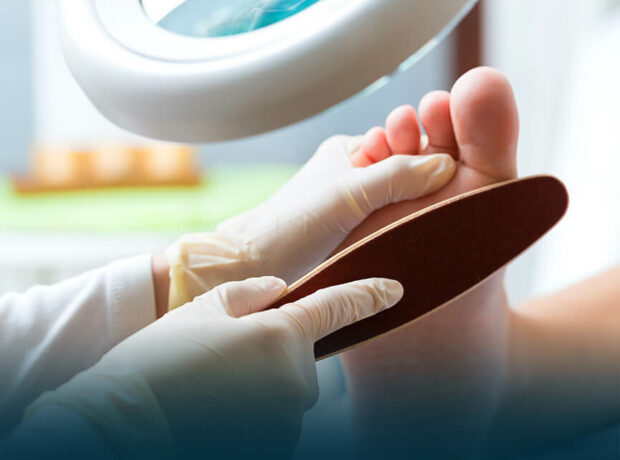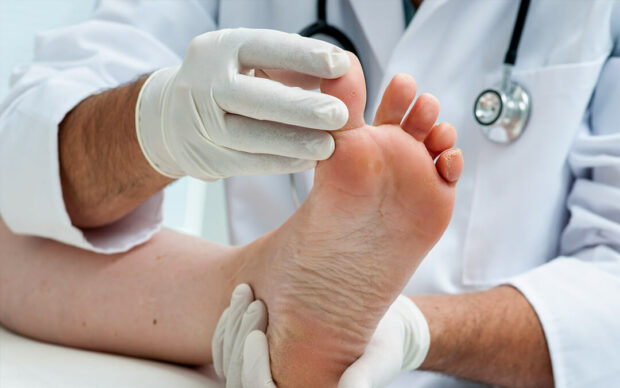Diabetic Foot Treatment
Diabetes is a disease that may lead to various foot problems if not controlled properly. The side effects of diabetes on feet include damage to nerves, leading to numbness of the legs and feet.

This lack of sensation is known as sensory diabetic neuropathy. Sometimes, there is poor blood circulation to the arms and legs, due to which wounds and cuts don’t heal, leading to infection. This case is called peripheral vascular disease. Doctors carry out various diabetic foot treatments every year. Sometimes, if the foot ulcers are severe and non-curable, amputation is required. Therefore, it is necessary to take care of diabetes.
Common diabetic foot problems and their treatment.
Here are some of the common foot problems that anyone can face in their life. However, there is a probability that they may lead to infections and serious issues in the case of diabetic patients.

- Athlete’s foot – It is a fungal infection. People experience itchiness, reddening, and cracking of the foot. Sometimes, germs may invade through the cracks.
Treatment – Use medicines recommended by the doctor. - Nail infection – Fungal infections may result in discoloration of your nail. They become thick and easily breakable. It is difficult to treat such nails.
Treatment – Consult a doctor and try to avoid wearing constricting shoes. Your doctor will provide you with medication and, if needed, will remove the nail. - Calluses – These are caused due to skin problems and ill-fitting shoes. They are the hard skin from the underside of your foot.
Treatment – These are common and can be treated at home. Gently rub a pumice stone on the callused region while bathing. Use cushioned and insole shoes. For a faster cure, you can visit the doctor. - Corns – They are the result of friction between your toes and shoes. They are like a callus and build near the bony area of your toe or between the toes.
Treatment – Use a pumice stone and rub it gently on your corn to remove hard skin. You can also use some moisturising creams on corns.

- Blisters are small bubble-like structures formed on feet due to the rubbing of shoes on the same spot.
Treatment – Do not pop them. Cover the blisters to prevent skin from further infection. You can do so by covering them with bandages and applying antibacterial cream. - Dry skin – Dry skin is a common problem for everyone. Cracking of dried skin may lead to the entry of germs into the crack, leading to bacterial or fungal infection.
Treatment – Use moisturising creams and soap to soften the skin. You can even consult your doctor to ask about the best moisturiser for your skin. - Diabetic ulcers – These are caused due to poor blood circulation to the foot. When cuts or wounds occur on the skin, they heal very slowly due to insufficient blood supply. They must be treated as soon as possible after they are noticed.
Treatment – Diabetic foot ulcer treatment must be done according to your doctor’s advice. If not treated on time, they may lead to serious infections that may not be curable. Around 10% of people suffer from this foot problem.
There are also other foot problems such as hammertoes, ingrown toenails, and plantar warts. The diabetic patient needs to take diabetic foot treatment for all these foot issues to prevent them from becoming serious. According to numerous studies, eating soaked walnuts benefits in diabetes treatment.
How to care for your feet:
Prevention is always better than cure. In the case of people suffering from diabetes, it is essential. Here are some tips on taking care of your feet to avoid issues.
Tips for Diabetic Foot Care
1. Do not wear tight shoes and wear socks inside the shoes. Take care of yourself and your diabetes.

2. Keep it a routine to wash your feet with warm water every day to smoothen them and have good blood circulation. After washing, wipe the feet and toes properly with a towel so that they do not remain wet.
3. Always observe your feet for sores, blisters, redness, calluses, or other problems.
4. Keep your blood sugar level in check and do exercises and yoga and take nutrition as per the doctor’s advice.
5. If you feel your feet are getting dry, use moisturisers to smoothen them.
6. Remove the dirt from your toenails and trim them when necessary.
7. Do not walk barefoot around your house or on roads.
8. Do a check up of your feet every 2-3 months.
Conclusion:
Therefore, we can conclude that patients with diabetes are very likely to have foot problems. Foot ulcers are a common foot problem occurring in around 10% of people suffering from diabetes. Treating diabetic foot ulcers can be a cure if the ulcers have not become complicated, if the problem is severe, it may lead to amputation. As a result, patients with diabetes must take care of their feet.











